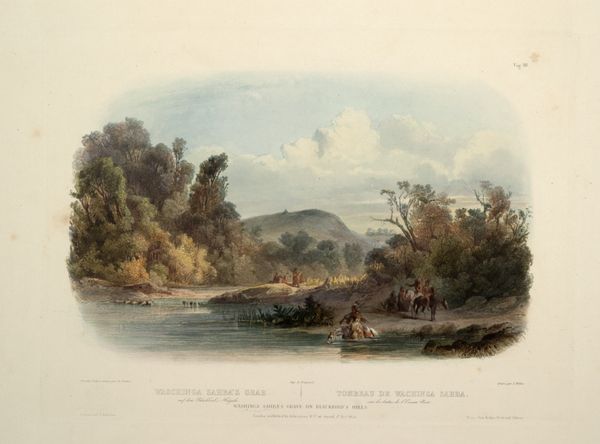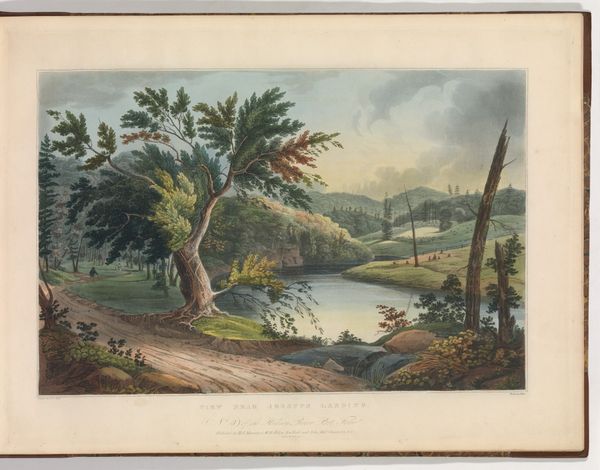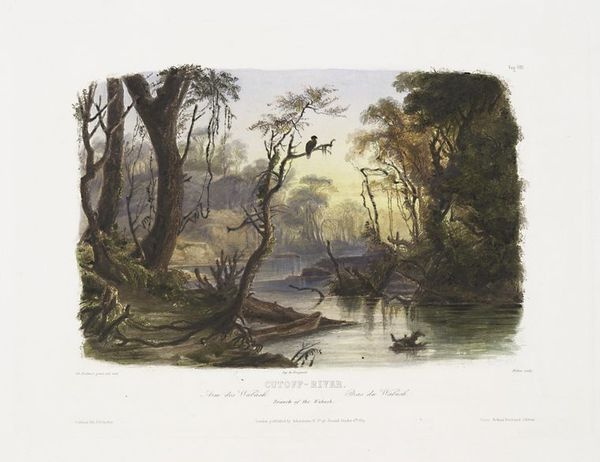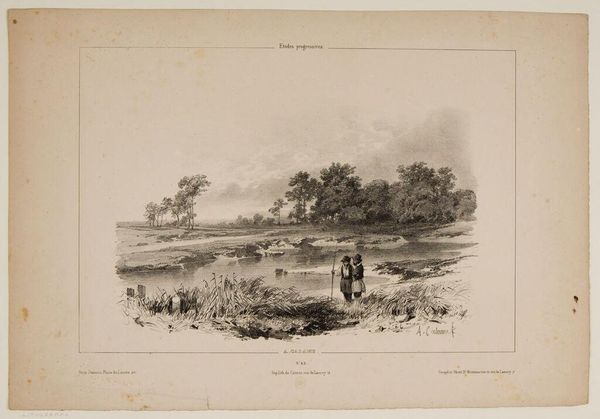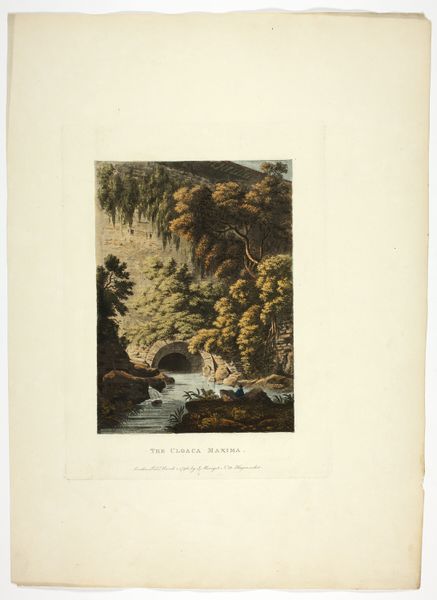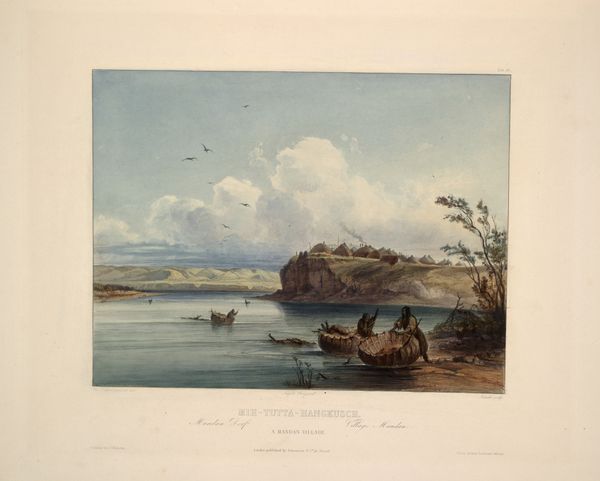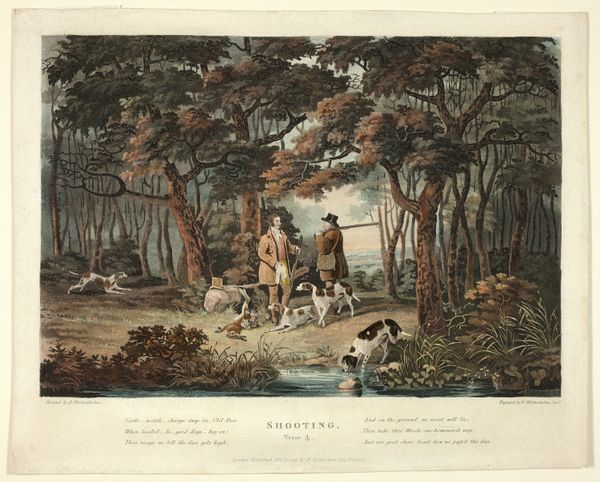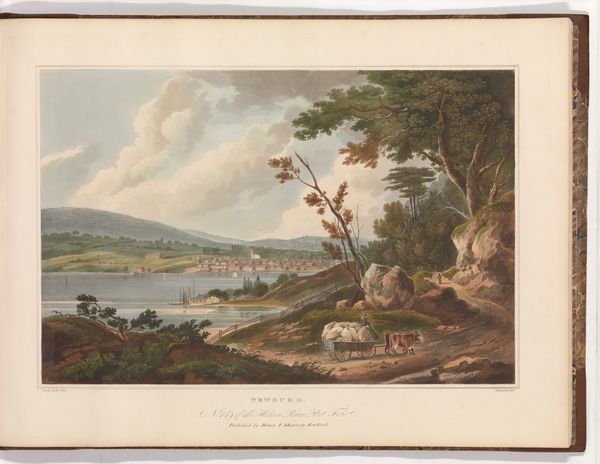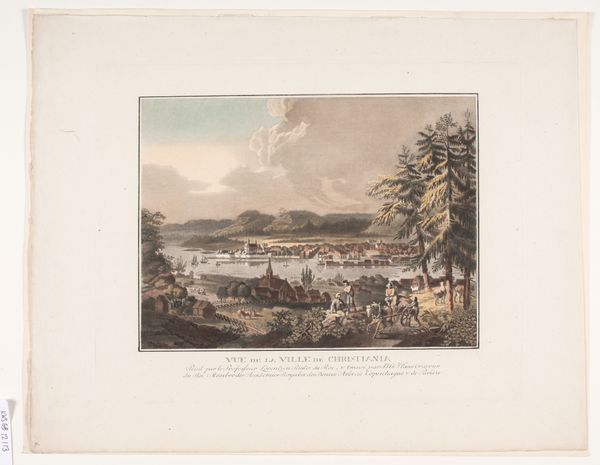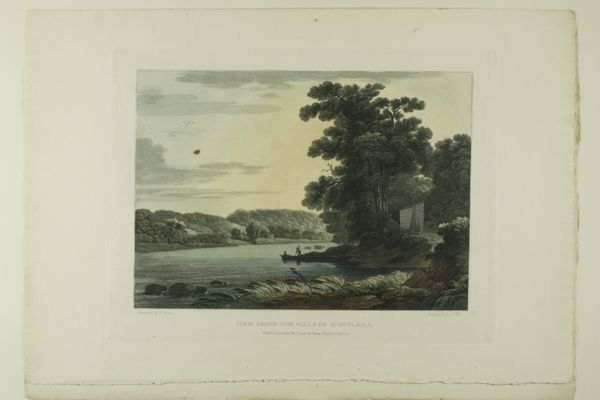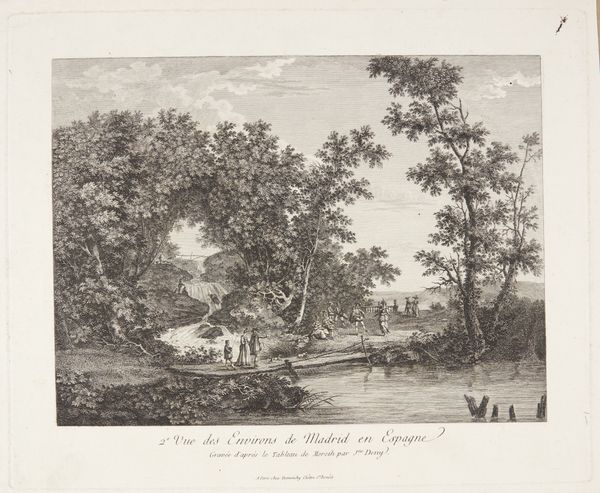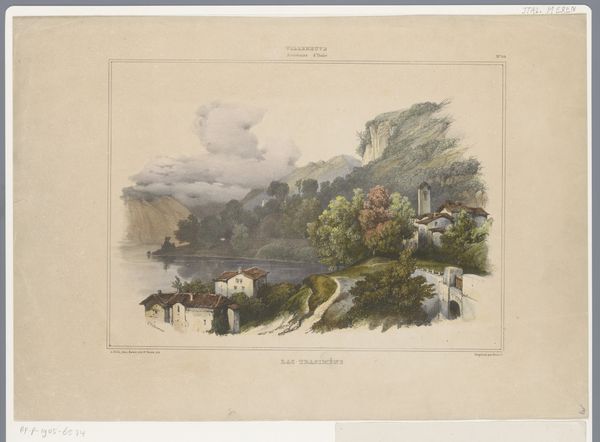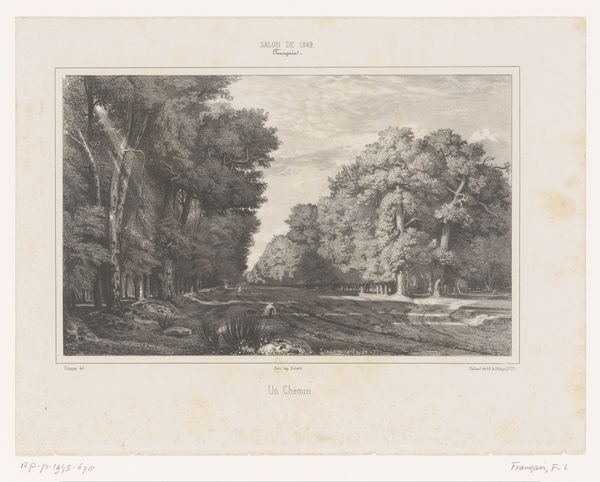
Punka Indians Encamped on the Banks of the Missouri, plate 11 from volume 1 of `Travels in the Interior of North America' 1843
0:00
0:00
karlbodmer
Joslyn Art Museum,Omaha, NE, US
lithograph, print
#
lithograph
# print
#
landscape
#
watercolor
#
indigenous-americas
Copyright: Public domain
Editor: This watercolor print, titled "Punka Indians Encamped on the Banks of the Missouri," created by Karl Bodmer in 1843, is so fascinating. The level of detail for a scene this expansive is striking, yet there’s also something melancholic about its quiet observation. What catches your eye most about it? Curator: What I find compelling is its historical positioning. Bodmer was a European artist traveling through North America, documenting what he saw. It is important to recognize how such visuals participated in constructing a specific narrative – of both romanticizing and, ultimately, enabling the displacement of Indigenous populations. How do you think images like this shaped the public’s understanding of the American West? Editor: It’s strange, because while seemingly documentary, there’s an undeniably painterly and idealistic quality to the composition and light. The untouched wilderness…It almost obscures the actual experiences and claims of the people who lived there. Curator: Precisely. And consider the role museums played, and still play, in housing and exhibiting these images. It positions these depictions of Indigenous life as something distant, belonging to the past. The art world’s role in this historical narrative is important to analyze. What might the lack of Indigenous voices within museums at that time have contributed to? Editor: It highlights how these landscapes and their inhabitants were being consumed and framed through a very specific, and arguably biased, lens. We lose so much complexity. Curator: Exactly. Reflecting on Bodmer's piece reminds us that artistic representations are rarely neutral. Examining whose story is being told, and how, is vital in understanding history and art. Editor: That’s a powerful reminder about the responsibility that comes with viewing and interpreting art like this. Thank you!
Comments
No comments
Be the first to comment and join the conversation on the ultimate creative platform.
